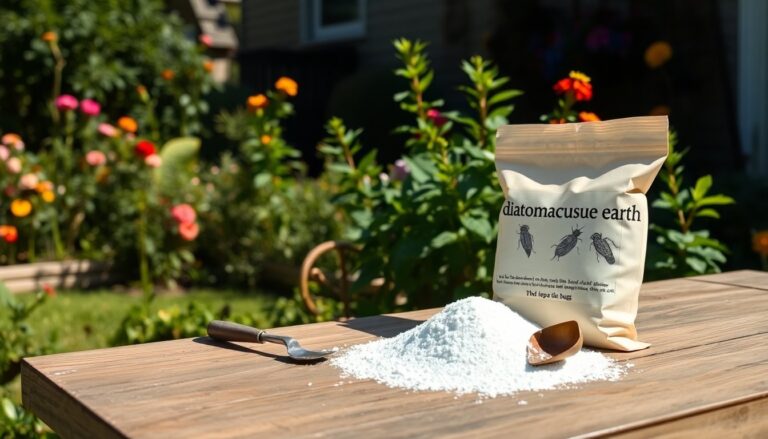Argomenti trattati
Stink bugs are well-known for invading homes and gardens, creating significant distress for homeowners. With their distinct odor and tendency to swarm, these pests can quickly become a nuisance. As people search for effective methods to manage these unwanted visitors, the question arises: does diatomaceous earth effectively combat stink bugs? This article explores the science behind diatomaceous earth while examining recommendations from pest control professionals.
Diatomaceous earth, a fine powder made from the fossilized remains of microscopic algae called diatoms, has gained popularity as a natural pest control solution. The powder is recognized for its ability to dehydrate insects, making it a potential tool in the fight against various pests, including stink bugs. However, the effectiveness of diatomaceous earth specifically against stink bugs is a topic of debate.
The mechanism of action of diatomaceous earth
The primary action of diatomaceous earth lies in its physical properties. When the powder comes into contact with insects, it damages their protective exoskeletons. This abrasiveness leads to moisture loss, ultimately resulting in the insect’s death. For pests like cockroaches and ants, this method can be particularly effective.
Understanding how it affects stink bugs
However, stink bugs present unique challenges. Unlike other insects, they possess a more robust exoskeleton that may resist the abrasive action of diatomaceous earth. Furthermore, stink bugs tend to avoid direct contact with the powder, preferring to hide in crevices or under leaves. This behavior raises questions about the overall efficacy of diatomaceous earth as a solution for stink bugs.
Expert opinions on pest control solutions
Pest control professionals often rely on a combination of techniques to address stink bug infestations. While some may recommend diatomaceous earth as part of a holistic approach, others emphasize the importance of targeted insecticides specifically designed to combat stink bugs. These chemical solutions can be more effective due to their ability to penetrate the bug’s defenses.
Integrated pest management strategies
Many experts advocate for an integrated pest management (IPM) approach. This strategy combines various methods, including preventive measures, mechanical controls, and chemical treatments. For instance, sealing entry points, removing potential food sources, and using traps can all contribute to reducing stink bug populations. Diatomaceous earth might serve as a supplementary tool within this broader strategy, but it is rarely a standalone solution.
Natural alternatives and preventive measures
In addition to diatomaceous earth, several other natural remedies can deter stink bugs. Some suggest using essential oils, such as peppermint or clove, which can act as repellents. Spraying these oils around potential entry points may help reduce the likelihood of stink bugs invading your home.
Moreover, maintaining a clean environment is crucial. Regularly cleaning up fallen fruits, removing debris, and ensuring proper garden maintenance can minimize the habitat that attracts stink bugs. By adopting these practices, homeowners can effectively reduce the chances of a stink bug infestation.
While diatomaceous earth may hold promise as a natural pest control method, its effectiveness against stink bugs remains uncertain. Experts generally recommend a multifaceted approach that incorporates both natural and chemical methods for optimal results. By understanding the behavior of stink bugs and employing a combination of strategies, homeowners can more effectively manage these pests and protect their living spaces.

